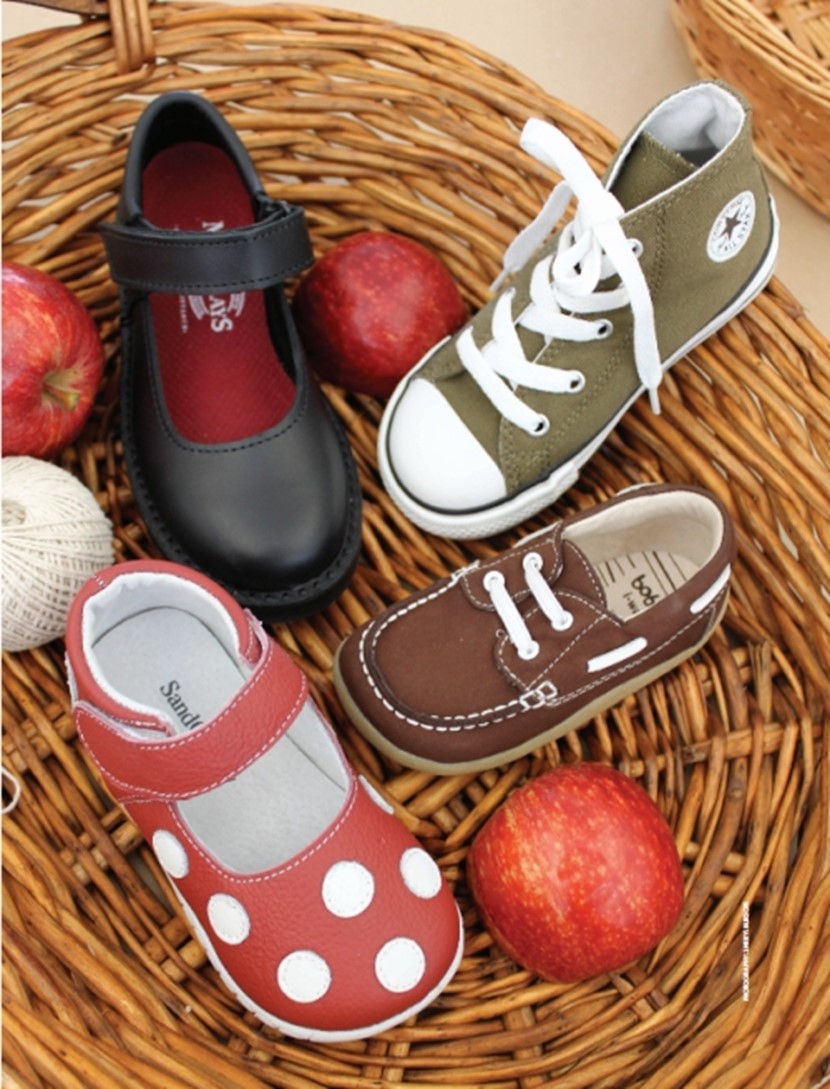Happy feet

Happy feet
When should you seek help for foot problems and how do you know which shoes are bad for your child's feet?
Buying shoes
Children are born with soft, vulnerable feet and the delicate cartilage in them doesn't fully develop until they reach 16 to 18. This makes it extra important for children to wear shoes that support but don't restrict their feet.
Research from Austria in 2007 shows more than 75% of children's shoes are too short and Auckland podiatrist Caron Orelowitz (www.thepodiatrist.co.nz) backs this up, saying the vast majority of New Zealand children are wearing shoes that are ill-fitting or too small.
Here's some expert advice on finding shoes that fit:
-
Measure the inside length of the shoes, rather than the outer length. The Austrian researchers from www.kinderfuesse.com say shoes should be 12-17mm longer than the child's foot, so take a tape measure with you.
-
Always check shoe lengths as the stated sizing can vary widely.
-
Look for shoes with soles that are flexible yet stable. They should be supportive around the heel and with lots of room for toes.
-
Bear in mind that one foot is likely to be longer than the other and look for shoes with straps or laces as they hold to the foot better and avoid annoying slipping.
-
Avoid shoes you can bend in half or twist, and avoid cheap, synthetic materials.
-
Going barefoot is great for the development of the muscles in little feet but jandals and Crocs should be used only at the beach.
-
Hand-me-down shoes are fine too, as long as the shoes have been worn down evenly.
-
Expect to go up a size every six months.
Foot problems
How do you know if your child has a problem with his feet? These are the warning signs according to Caron:
- Frequent tripping.
- Children complaining their legs are sore.
- Children who don't like walking for long periods or who want to be carried.
- Knees that are not straight.
- Feet that turn in when walking.
When they first learn to walk toddlers and preschoolers are concentrating just on getting about on two legs and can often "walk funny" as their limbs unfurl, develop and their legs and feet straighten out.
Podiatrist Justin Chong, from Bigfoot Podiatry in Auckland, says flat feet and intoeing (pigeon toes) are the most common conditions among three to five year olds.
Intoeing is the natural position for feet when babies are first born and it can take five years for the bones to untwist from the foetal position. Intoeing is normal in the preschool age group and at least 90% of children will grow out of the condition, he says.
Genetics often play a part in ongoing flat feet conditions. Orthotics (special shoe inserts) are commonly used when the condition is causing pain, but mostly it's not painful.
Justin says public awareness of foot problems is poor and many doctors advise a wait-and-see-if-they-grow-out-of-it approach. In fact, parents should look out for the warning signs and seek a medical assessment as soon as possible.
Highly recommended
Shoes for preschoolers pictured below:
* McKinlays black school shoes, size 10, $89.90 and Converse Chuck Taylor All Star hi-tops, size eight, $59.90, both from Eden Shoes in Auckland (edenshoes.co.nz)
* Bobux i-walk dockside shoes, size 21, $69.95, (www.bobux.co.nz)
* Sand Q baby red and white spotty shoes, size 26, $39 from Bugalugz (www.bugalugz.co.nz).

As seen in OHbaby! magazine Issue 17: 2012

Subscribe to OHbaby! magazine
Purchase Issue 17

